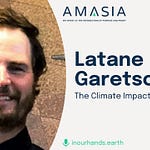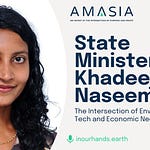In this episode, Ramanan speaks with Leidy Klotz, Copenhaver Associate Professor at the University of Virginia. His research is filling in underexplored overlaps between engineering and behavioral science in pursuit of more sustainable built environment systems. At the University of Virginia, he co-founded and co-directs the Convergent Behavioral Science Institute. He is also the author of Subtract: The Untapped Science of Less.
The full transcript is available above. This episode is also available on Apple Podcasts and Spotify.
In Our Hands is a production of Amasia. Follow these links for more about our firm, the Amasia blog, our climate fiction podcast, and Ramanan’s blog.
Highlights
[00:08:02] Trade-Offs in Sustainability
[00:13:56] Diversity in Sustainable Design
[00:17:52] Subtracting in Everyday Life












